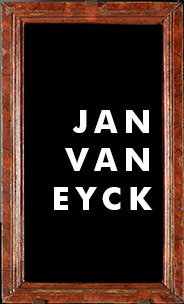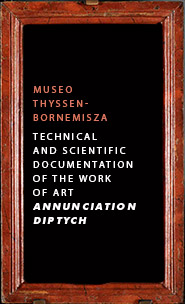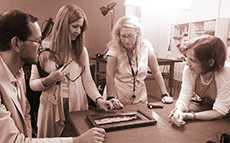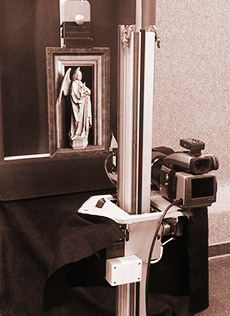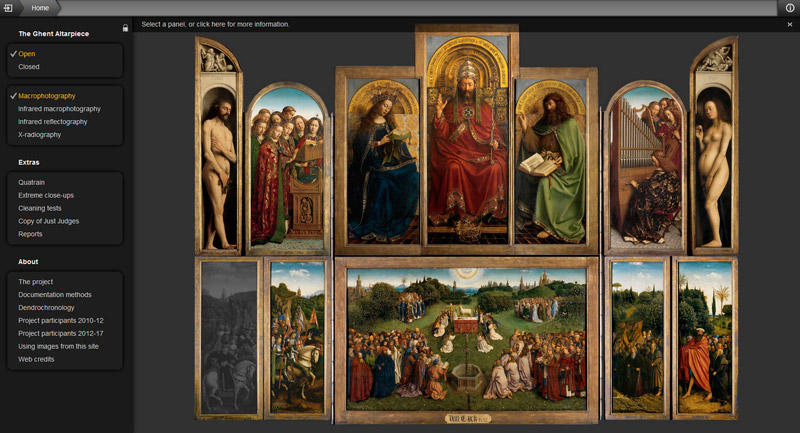In 2014, a project based at the Study Centre for the Flemish Primitives at the Royal Institute for Cultural Heritage, Brussels (KIK-IRPA), began a study of paintings by Jan van Eyck (c. 1390-1441) in European Collections. In September 2015, the project came to Madrid to document Van Eyck’s Annunciation diptych, painted in the mid-late 1430s.
One of Jan van Eyck’s most intellectually sophisticated works, the painting can be read in its entirety as a small-scale sculpture made of different kinds of stone: the white ‘statuettes’ are reflected in the black background, which is probably meant to represent highly polished marble.
The painting has been documented by the VERONA team with the same equipment and procedures used to document the Ghent Altarpiece by Hubert and Jan van Eyck, currently under restoration by the KIK-IRPA: macrophotography in normal, raking and infrared light; macrophotography in ultraviolet fluorescence and infra-red reflectography.
The newly-made material will be published online in open access, complementing the Closer to Van Eyck website on the Ghent Altarpiece, funded by the Getty Foundation.
The VERONA project is funded by the Belgian Federal Science Policy through the programme BRAIN-BE, Belgian Research Action Through Interdisciplinary Networks. Its partners are the University of Antwerp, the Vrije Universiteit Brussel, Universum Digitalis and the Groeninge Museum, Bruges.
The VERONA team members are: Susan Jones, Bart Fransen, Christina Currie, Jean-Luc Elias and Sophie Depotter.

